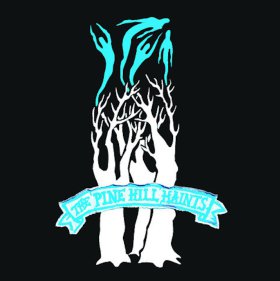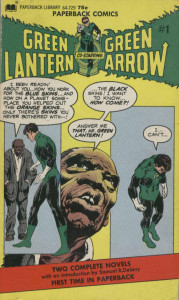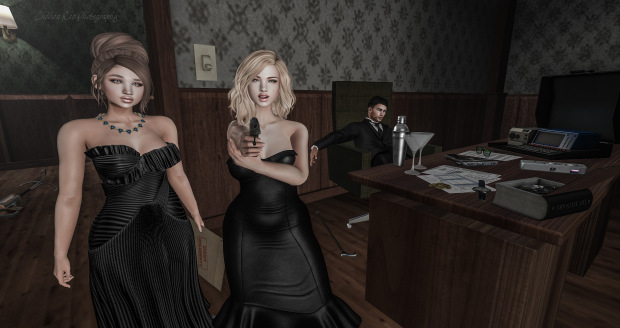 thepinehillhaints.bandcamp.com
thepinehillhaints.bandcamp.com
To say that the Pine Hill Haints are the greatest artists to ever come out of Alabama would be unfair in that it limits the Haints to Alabama. Their vision can, at times, be hard to swallow. Not quite familiar and not quite foreign, the Haints tap elements of bluegrass, classic and alt country, honky tonk, rockabilly, American and Irish folk, calypso, punk, and grunge. They play in Genre Purgatory. To describe their sound, the Haints themselves have coined the phrase “Alabama Ghost Music” but such a label suggests that there exists some subculture, some ghost-music scene, in the Yellowhammer State. Really, Alabama Ghost Music is a genre of one, the Pine Hill Haints — or maybe a genre of five if you include Rise Up Howlin Werewolf, the Natchez Shakers, the Wednesdays, and Counter Clockwise (though all these bands are overshadowed by and even share musicians with the Haints).
On stage, I’ve heard guitarist/lead-singer Jamie Barrier say that they play “country music,” “sittin’ music,” “dancin’ music.” Their various roots-music influences are easy to hear. I did not tune-in to the grunge flair until Jamie started strumming the chords to Nirvana’s “About A Girl” (“I need an easy friend…”) during a soundcheck before a show in Mobile. I caught myself singing along and forever after listened to the Haints in a whole new way. Closer to the truth, Jamie has also called it “dead music.” The Haints sing the ghosts of Alabama, of the southern condition. Ghost Dance is their masterpiece.
Ghost Dance begins in a driving trance called “Spirit of 1812” and moves seamlessly into two set favorites, “For Every Glass That’s Empty” (imagine Marty Robbins singing pub songs) and “I Never Thought That The Day Would Come When You Would Hate Me So Dearly.” The next five tracks skirt genre boundaries from punkish country (“Say Something, Say Anything”) to folksy blues (“St. Louis Blues”) to grungy western (“Phantom Rules”) to grungy rockabilly (“When You Fall”) to punk-a-billy (“Death By Stereo”). These tracks are when the Haints are trucking it, championing their own sound.
And then comes something completely different…
Washtub-bassist Matt Bakula helms the banjo and mic. “Garden of the Dead” owes its sound to Calypso music (think Harry Belafonte meets Screamin’ Jay Hawkins) and showcases Matt’s theatrical vocals, crowing quick-witted, sharp-tongued lyrics. Years ago, I caught-up with Matt at a show in Huntsville and asked him about his side projects (particularly Counter Clockwise). He told me that there is only so much you can do with a washtub bass. I imagine that’s why their sound diverges so far from their norm here. Calypso is an outlet for another highly prolific artist in the group and adds a new dimension to their set. The French once claimed Alabama and, like Louisiana, brought slaves to the territory from Africa but also via the Caribbean. “Garden of the Dead” and “Walkin Talkin Dead Man” conjure new ghosts of Alabama — the Creole, the Vodou.
After a set at the 280 Boogie in Waverly, Jamie managed the goodies table, selling t-shirts and vinyls. Casually, he noted that their music was heavily influenced by African percussion. Deeply insulted, a man standing nearby scoffed, “There ain’t a thing African about your music.” Waverly is in Alabama, after all. Jamie just smiled, shrugged, and politely ignored the man. After long tenures, Matt and drummer Ben Rhyne have since left the band.
Though probably not the best, my favorite track on the album is (and has always been) the colorful rockabilly tune “Whisper in the Dark.” If Dion and the Belmonts attended Buffy the Vampire Slayer’s Sunnydale High, “Why Must I Be A Teenager In Love” would have sounded a lot like this. “Whisper in the Dark” is almost sarcastic in how teeny-poppy-circa-1959 it is when the content is so dark. A woman “from the Otherside” beckons the singer to join her in some way. The listener is given little. Is the woman a vampire, a ghost, a succubus, or what? And what does she want with the singer? The song teases the listener with ambiguity and I absolutely love it.
Ghost Dance finishes strong with four trad tracks (“You’re Gonna Need Somebody On Your Bond,” “St. James Infirmary Blues,” “The Cuckoo Bird,” and “Raggle Taggle Gypsy”) all done with that Haints crunchy flavor, another set favorite (“Catfish Angel”), and the finale “Wake Up” — haunted by Mike Posey’s accordion and Kat Barrier’s harmonic saw. Mixed in is banjo-driven blues “Ol’ White Thang” — heavy on the reverb, dripping with ambiance — and the “Leo O’Sullivan Story” a dialogue in which a man (presumably Leo O’Sullivan) tells of the night that he heard and saw a banshee. It’s not quite fiction because the listener is left with the impression that Leo truly believes that he had witnessed something supernatural. A true appreciation of Ghost Dance requires some suspended disbelief. This is Alabama sung through abstraction. Ghost Dance is a haunted house, a campfire tale, smoke and mirrors. Ghost Dance is Alabama Ghost Music.
In November 2017, Ghost Dance will turn 10 years old. I tend to think that a musical generation spans 10 years — ’90s music is different from ’80s music is different from ’70s music, and so on. True indie music (not the genre “indie” like the Shins or Death Cab for Cutie but truly indie as in “independent” of major labels) transcends or side-steps that generation distinction. Ghost Dance cannot be defined as ’00s music or in terms of Panic at the Disco, the Killers, Fallout Boy or whatever other predictable garbage kids were listening to in those days. So, in what context can we assess Ghost Dance?
I’ll channel Ani DiFranco and say that Ghost Dance was not a novelty or a trend but a “record as in a record of an event, the event of people playing music in a room.” It is a record that defied genre, when artists swayed by very different influences broke from the expectations and prejudices of genre and locale to create something truly unique. Granted, defining the Haints by an album does the band injustice. There is fire and rustic pageantry in their performances. To know the Haints is to witness the Haints. But if an album is a record (“as in a record of an event”), Ghost Dance is a snapshot of when the band was firing on all cylinders. Earlier albums, Trains Have No Names and Those Who Wander, were more grounded in genre. Later albums, To Win Or To Lose and Welcome To The Midnight Opry, were better produced. Ghost Dance, however, was when the band’s many influences — all those ghosts — first rose from dead roots and gathered.
Advertisements Share this:




